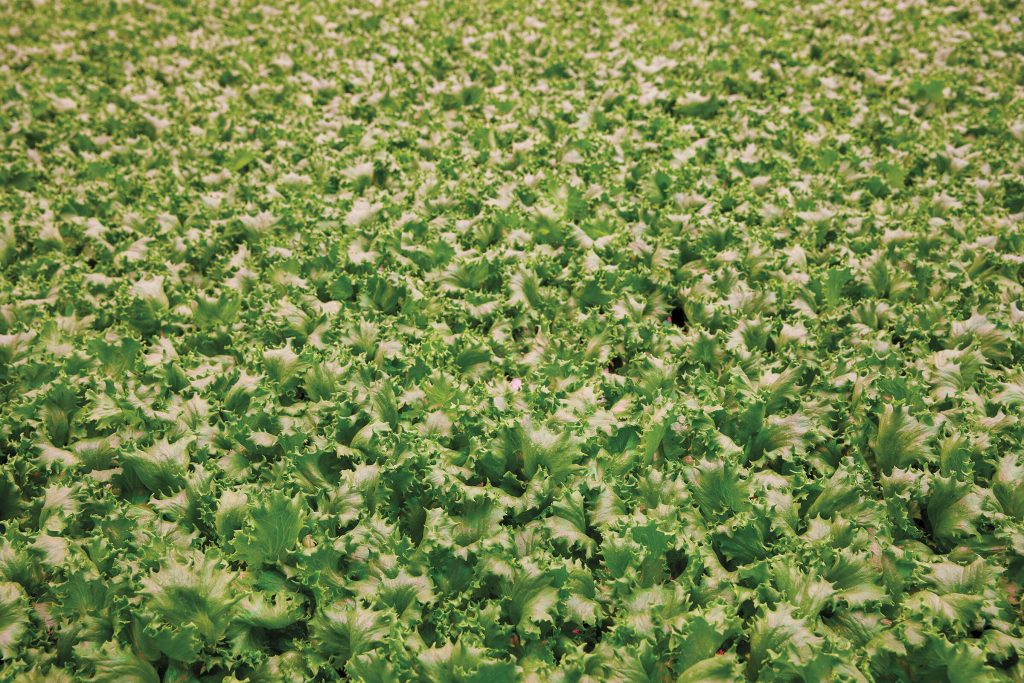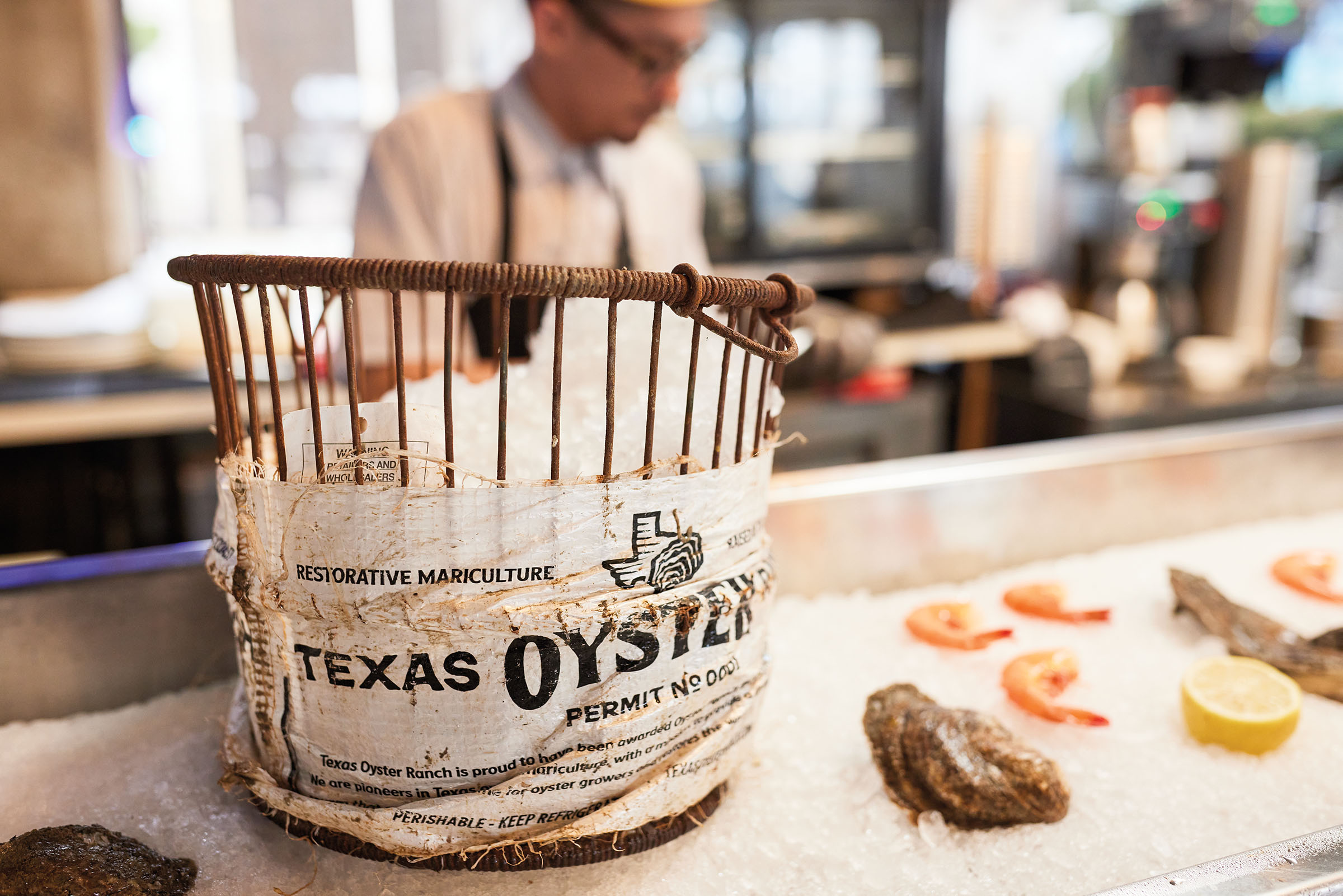
Restaurateur Brad Lomax never thought much about the oyster shells his patrons discarded after eating the decadent meat inside. A lifelong surf enthusiast and owner of four eateries in Corpus Christi, including Water Street Oyster Bar, Lomax didn’t worry about the oyster shells until his waste management bills started skyrocketing in the late 2000s.
“The price of diesel was through the roof, and we were getting significant surcharges on our dumpster bills because of the weight we had in there—and the lion’s share of our weight was oyster shells,” Lomax says.
Water Street Oyster Bar
309 N. Water St., Corpus Christi.
Open Sun-Thu
11 a.m.-10 p.m.,
Fri-Sat 11 a.m.-11 p.m.
361-881-9448;
waterstreet
marketcc.com
Tough like cement and a bit ugly, oyster shells typically make their way to landfills, where they take years to decompose.
Lomax was still thinking about his bottom line when he took a walk with his neighbor, Joe Fox, one evening in 2009. The sage words Fox, a senior fellow at the Harte Research Institute for Gulf of Mexico Studies at Texas A&M-Corpus Christi, told him that night—“An oyster shell in a landfill is a resource out of place”—launched an entire movement.
In their natural habitat, oysters grow on top of each other. Baby oysters, called spat, prefer attaching to the shells of adults, where they mature to market size in nine to 18 months. Over time, these oyster communities create formidable, rock-hard reef systems.
The death of coral reefs due to rising water temperatures is well documented. But oyster reefs are more prevalent in North America with its salty and brackish coastal waters. And like their coral counterparts, oyster reefs are at risk.
In Texas, the bay waters surrounding communities like Port Aransas, Galveston, and Matagorda used to teem with oyster reefs. But in recent decades, an estimated 85% of oyster reefs worldwide have been lost to hurricanes and commercial oyster harvesting operations. Almost half of the United States’ $253 million oyster industry is based in the Gulf Coast, and Texas’ share of that totals about $50 million.
“Oysters are really the only habitat we eat,” says Jennifer Pollack, who holds a PhD in marine science and is chair of the Coastal Conservation and Restoration at the Harte Institute.
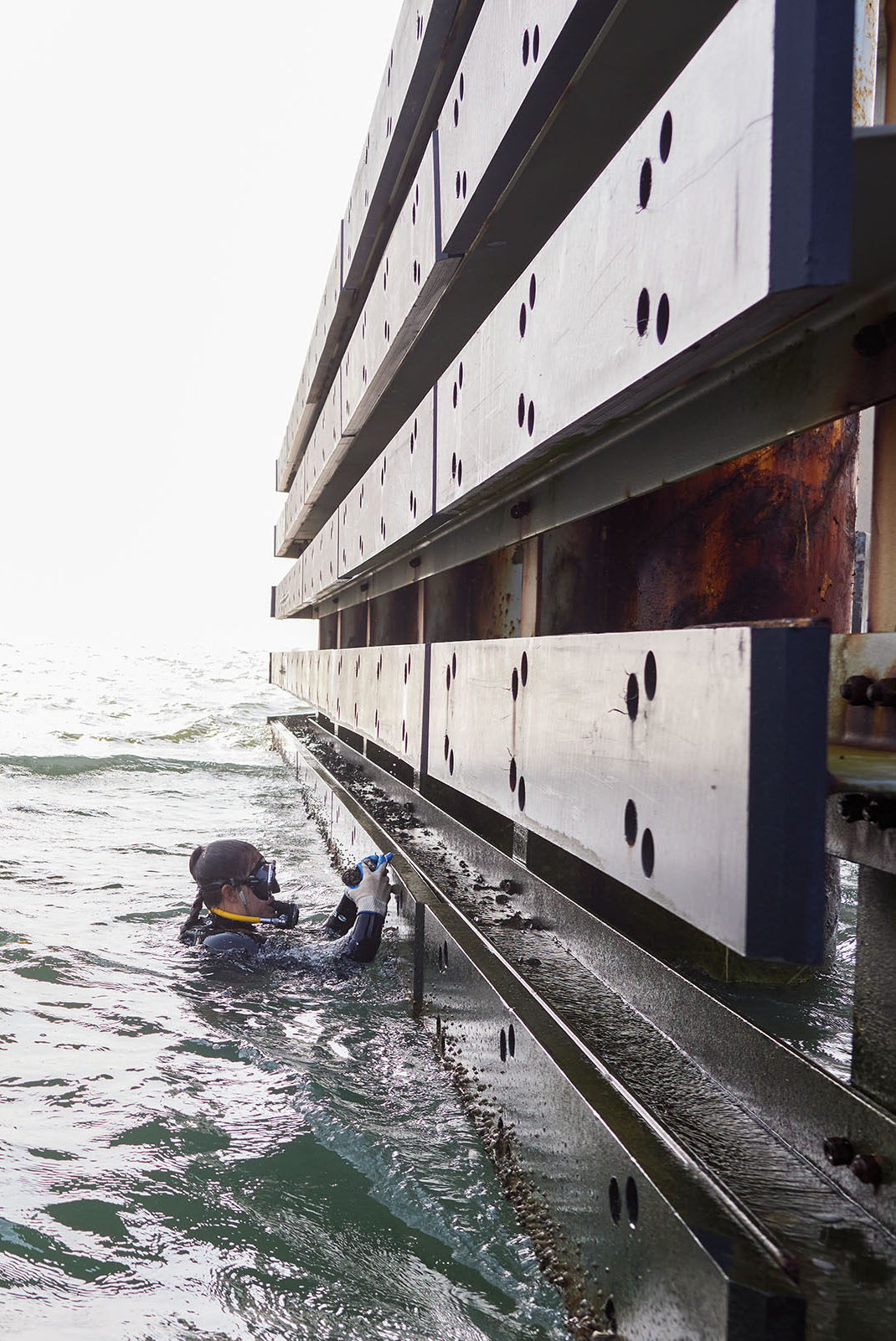
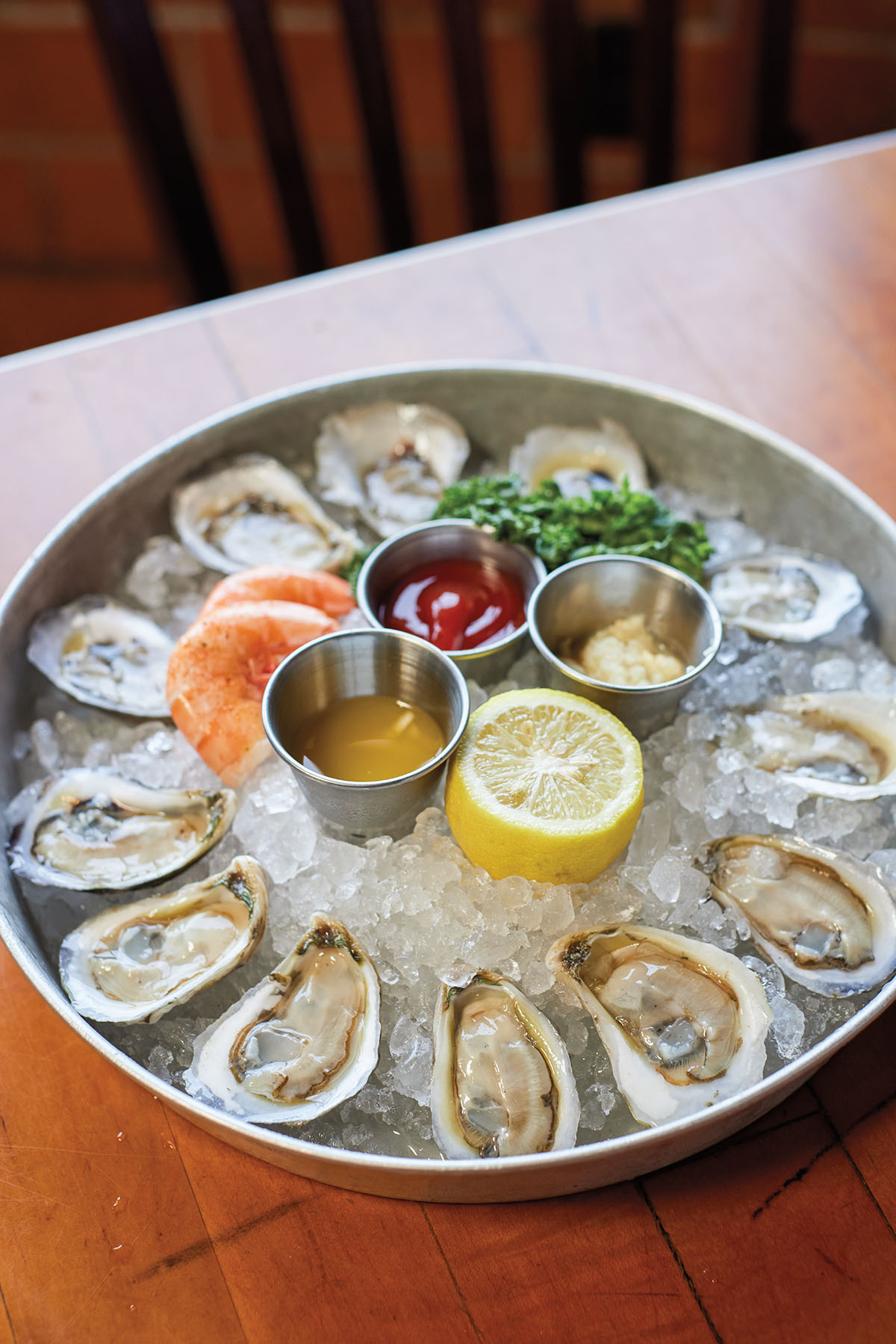
Harvesting oysters involves raking or dredging the bay to scoop up chunks of oyster reef. Hammer-like tools are required to cull the freshly dredged oysters, separating them from each other and from reef material so they can arrive ready to be eaten at the restaurant.
Beyond the fact that many people find them delicious, oysters have a tremendous capacity for filtering water. An adult oyster filters 50 gallons per day, so their presence keeps our water clean. Oyster reefs also protect coastlines from erosion, even following major catastrophic weather events like hurricanes. And the presence of oysters contributes to biodiversity, something that is top of mind for Texas anglers.
“Starting in 2015, we saw a huge influx of commercial fishermen down here hitting areas that historically were not oystered,” says John Blaha, assistant director of Coastal Conservation Association Texas and a recreational fisherman for 50 years. He says reef areas where he once could wade in up to his thighs or waist have lost reef and made fishing more of a challenge.
“That’s what you lose when you lose habitat,” he says. “One thing we’ve got to remember is the pie never gets bigger. Our population in Texas [and] our population of recreational anglers continues to grow.” New research also points to evidence that oysters might be excellent capturers of carbon, and this emerging data is of critical interest to industry executives and climatologists.
When Fox told Lomax an oyster shell is a resource out of place, he meant removing oysters without replacing them was a missed opportunity for sustainability. He thought recycling oyster shells might be a mutually beneficial solution to this environmental challenge.
The idea took off in 2009 when Lomax partnered with the Harte Institute to pilot a program called Sink Your Shucks. At Water Street Oyster Bar, he separated discarded oyster shells from the rest of the trash. They then sit outdoors in quarantine for six months before being bagged and strategically placed in South Texas coastal waters.
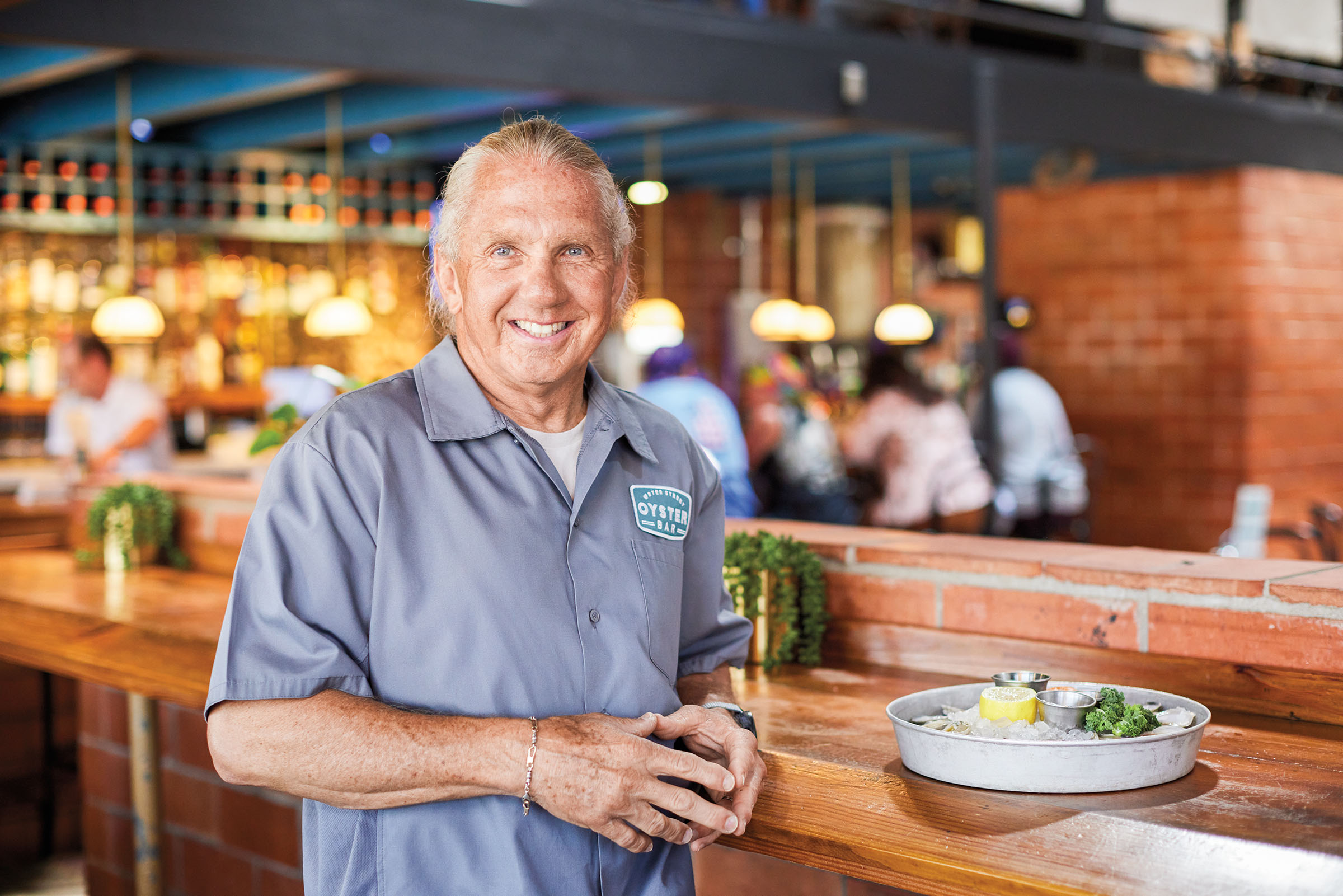
The proposition was a stinky one—no one loves the smell of oyster shells drying in the Texas sun—but there was a cost savings on the line. There was also an opportunity to enrich the environment and educate patrons about the coastline they enjoy.
Banners and table cards reading “We recycle oyster shells to build future habitat” soon appeared at his restaurant. Later, other restaurants and seafood purveyors joined in, too. “There’s a chance the oyster you’re eating today grew on the back of the oyster you ate last year that we recycled in the bay,” Lomax tells his patrons.
Volunteers turned up by the dozens for community events, where they passed the bagged oyster shells hand to hand until the shells ended up in their final location. Before the COVID-19 pandemic, more than 100 volunteers would show up for these events, and organizers hope to reach those levels again in 2024. Through mapping long term water quality patterns, and looking at oyster abundances and historical reef locations, scientists at the Harte Institute were able to pinpoint the best places for these reef restoration projects.
“You can see oyster recruitment—reattachment to these reefs—within weeks,” says Pollack, who heads the initiative. “You can see an increase in the biodiversity within the first few months, and you can see large fish coming in and starting to take bites off the reef within weeks. It’s incredible. You don’t have to hold your breath for three years and wait to see if it worked or not.”
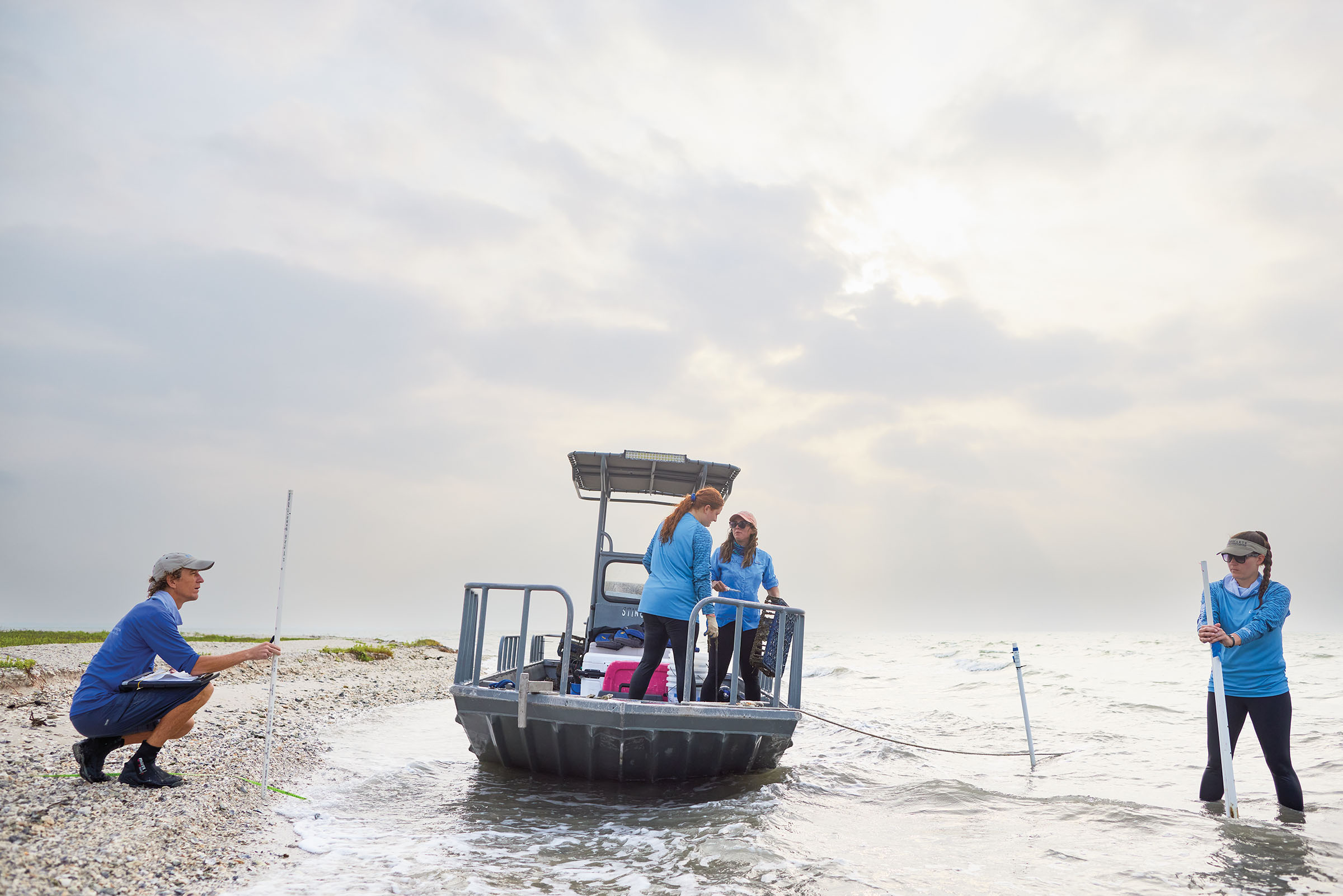
Reef restoration sites include parts of Aransas Bay, Copano Bay, and St. Charles Bay. The latter, near Rockport and adjacent to Goose Island State Park, is their largest reef restoration to date. A portion of this reef, which runs parallel to the shoreline, was installed just two weeks before Hurricane Harvey hit in 2017. Pollack’s team was forced to evacuate and wait out the storm, worried about what the reef they’d invested a tremendous amount of labor and time into would look like when they returned.
“When we came back out there, the reef looked great,” Pollack says. Due to all the rain, the salinity of the bay had dropped, causing the oysters to spawn more than normal. “There were tons of baby oysters already attached to this reef within six weeks of us building it,” she adds. “The hurricane went from being terrifying to a remarkable surprise about the resiliency of these habitats. That gives us confidence that what we’re doing has staying power.”
Today, 14 years after the program began, Sink Your Shucks has recycled more than 2 million pounds of oyster shells and restored 45 acres of reef along the Texas coast.
“You can look at Google Earth and see from a satellite image the reefs that we have restored, where that recycled shell has gone back into the water,” Pollack says. “That is a big deal.”
The Sink Your Shucks program is now focused on expanding to additional restaurants in Austin, San Antonio, and other cities.
Partners in Brine
Restaurants and festivals that participate in the Sink Your Shucks program
Virginia’s On the Bay
815 Trout St., Port Aransas.
361-749-4088; virginiasonthebay.com
Black Diamond Oyster Bar
418 NAS Drive, Corpus Christi.
361-353-4210; blackdiamondoysterbar.com
Austin Oyster Festival, February 2024
Republic Square
422 Guadalupe St., Austin.
austinoysterfestival.com
Fiesta Oyster Bake, April 2024
St. Mary’s University,
One Camino Santa Maria, San Antonio.
210-436-3324, oysterbake.com
Another way Lomax and the Harte Institute are helping to protect reefs: They partnered to bolster a 2019 oyster farm bill that permitted the creation of Texas’ cultivated oyster mariculture industry. (Texas was one of the last coastal states to do so.) This allows oysters to be cultivated for consumption, rather than being taken from their natural habitat.
Lomax holds the first oyster cultivation permit in Texas and launched his operation in 2021. This year, he started supplying the oysters he grows in Copano Bay to restaurants throughout the state. He says startup costs for an oyster farm are about the same as an oyster boat.
After a lifetime in the restaurant industry, Lomax says he found his calling as an oyster farmer. “I’m a conservationist and a capitalist,” he says. “I genuinely believe that through this institution, we can bridge that gap that exists between the environmentalists [and entrepreneurs]. Just because you love the environment doesn’t mean you don’t want anybody to ever make a profit.”
Science and enterprise don’t always meet in the middle, but in this case, the tide might be turning.
